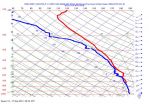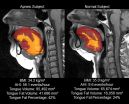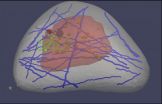(Press-News.org) TORONTO — A virtual ward, a new model of care that provides support to high-risk and complex patients in the community for a few weeks after discharge from hospital, did not prevent hospital readmissions as hoped in a clinical trial in Toronto.
Hospital readmissions are common and costly and no intervention has reliably reduced them. Virtual wards, pioneered in Britain 10 years ago, were thought to have the potential to reduce readmissions, but had not been rigorously evaluated by researchers.
Dr. Irfan Dhalla, a physician at St. Michael's Hospital, led a randomized trial in Toronto to determine whether a virtual ward could improve health outcomes and reduce readmissions in a high-risk population.
The results of the trial were published today in the Journal of the American Medical Association.
Patients in the control group received the kind of care they would usually receive -- generally a typed summary given to them and their primary care physicians when they were discharged from hospital, prescriptions, counseling from the resident physician and-or other members of the health care team, arrangements for home care as needed and recommendations and-or appointments for follow-up care with the primary care physician and specialists.
The 1,923 patients involved in the trial had been discharged from general internal medicine units at St. Michael's, the University Hospital Network and Sunnybrook Health Sciences Centre.
In addition to the usual care, patients assigned to the virtual ward were "admitted" to the ward on the day they were discharged from hospital, given information about what kind of services they would receive through the ward and a phone number to call if they needed help.
The virtual ward team, based at Women's College Hospital, met every morning to discuss new and existing patients and to design and execute individual care plans. Each virtual ward patient's primary care physician received a letter by fax informing them that his or her patient had been admitted to the virtual ward. The virtual ward physician was strongly encouraged to speak to the primary care physician by phone soon after the patient was admitted, whenever necessary during the virtual ward admission and prior to virtual ward discharge.
The virtual ward team included care co-ordinators, a part-time pharmacist, a part-time nurse or nurse practitioner, a full-time physician and a clerical assistant. Most of the staff worked for the Toronto Central Community Care Access Centre, which is responsible for publicly funded home care services in Toronto.
The care plan typically involved the patient being discussed at the daily interprofessional team meeting on the day after hospital discharge, followed by the care coordinator seeing the patient at home within a few days. After that, patients were assessed over the phone, at home, in a clinic at Women's College Hospital or if necessary at another location such as the family physician's office.
Dr. Dhalla, who is also an associate scientist in the Li Ka Shing Knowledge Institute of St. Michael's Hospital, said the trial did not put patients on a more positive trajectory, as he and his colleagues had hoped. The small difference in readmissions at 30 days after discharge was not statistically significant, and there was no difference at 90 days, six months or one year after discharge.
Dr. Dhalla, a general internist, said there were several possible reasons why the virtual ward did not reduce readmissions.
The health care system in Ontario is fragmented and it was difficult for the virtual ward to provide truly integrated care. For example, it was difficult for many virtual ward team members to communicate with many of the patients' primary care physicians by phone or e-mail, making collaborative care difficult.
Different hospitals had different electronic health records systems, making it difficult to know what care a patient had received or was currently receiving.
Because this virtual ward served patients discharged from four hospitals, the interventions began after discharge rather than during the hospitalization.
Dr. Dhalla, who is also vice-president for health system performance at Health Quality Ontario, noted that this virtual ward trial was much larger than some earlier studies with more positive outcomes, and included older patients and patients from several different sites.
"It remains possible that a virtual ward might reduce hospital use in high-risk patients in a cost-effective manner in a differently structured health care system, where home-based, primary, hospital and emergency care are more closely integrated." he said.
INFORMATION:
This project was funded by the Canadian Institutes of Health Research, the Ontario Ministry of Health and Long-Term Care, the Green Shield Foundation of Canada, the University of Toronto Department of Medicine, the Academic Funding Plan Innovation Fund and the participating health care organizations
About St. Michael's Hospital
St. Michael's Hospital provides compassionate care to all who enter its doors. The hospital also provides outstanding medical education to future health care professionals in more than 23 academic disciplines. Critical care and trauma, heart disease, neurosurgery, diabetes, cancer care, and care of the homeless are among the Hospital's recognized areas of expertise. Through the Keenan Research Centre and the Li Ka Shing International Healthcare Education Centre, which make up the Li Ka Shing Knowledge Institute, research and education at St. Michael's Hospital are recognized and make an impact around the world. Founded in 1892, the hospital is fully affiliated with the University of Toronto.
http://www.stmichaelshospital.com
Follow us on Twitter: http://www.twitter.com/stmikeshospital
Clinical trial finds virtual ward does not reduce hospital readmissions
Hospital readmissions are common and costly and no intervention has reliably reduced them
2014-09-30
ELSE PRESS RELEASES FROM THIS DATE:
Researchers show EEG's potential to reveal depolarizations following TBI
2014-09-30
CINCINNATI—The potential for doctors to measure damaging "brain tsunamis" in injured patients without opening the skull has moved a step closer to reality, thanks to pioneering research at the University of Cincinnati (UC) Neuroscience Institute.
The research team, led by Jed Hartings, PhD, research associate professor in the department of neurosurgery at the UC College of Medicine, has shown that spreading depolarizations—electrical disturbances that spread through an injured brain like tsunami waves—can be measured by the placement of electroencephalograph (EEG) electrodes ...
NASA's Swift mission observes mega flares from a mini star
2014-09-30
On April 23, NASA's Swift satellite detected the strongest, hottest, and longest-lasting sequence of stellar flares ever seen from a nearby red dwarf star. The initial blast from this record-setting series of explosions was as much as 10,000 times more powerful than the largest solar flare ever recorded.
"We used to think major flaring episodes from red dwarfs lasted no more than a day, but Swift detected at least seven powerful eruptions over a period of about two weeks," said Stephen Drake, an astrophysicist at NASA's Goddard Space Flight Center in Greenbelt, Maryland, ...
NASA's HS3 looks Hurricane Edouard in the eye
2014-09-30
NASA and NOAA scientists participating in NASA's Hurricane and Severe Storms Sentinel (HS3) mission used their expert skills, combined with a bit of serendipity on Sept. 17, 2014, to guide the remotely piloted Global Hawk over the eye of Hurricane Edouard and release a sonde that rotated within the eye as it descended and fell into the eyewall of the storm at low levels.
NASA's HS3 mission has returned to NASA's Wallops Flight Facility on the Eastern Shore of Virginia for the third year to investigate the processes that underlie hurricane formation and intensity change ...
Study shows that tongue size and fat may predict sleep apnea risk in obese adults
2014-09-30
DARIEN, IL – A new study of obese adults is the first to show that those who have obstructive sleep apnea have a significantly larger tongue with a higher percentage of fat than obese controls. This may provide a mechanistic explanation for the relationship between obesity and sleep apnea.
Results show that obese participants with sleep apnea had significantly greater tongue volumes, tongue fat and percentage of tongue fat than obese controls without sleep apnea, after adjusting for potential confounders such as age, body mass index (BMI), gender and race. Further analysis ...
Ultrafast remote switching of light emission
2014-09-30
This news release is available in German.
The researchers etched a photonic crystal around several quantum dots in a semiconductor layer. Quantum dots are small structures that spontaneously emit light as a consequence of atomic processes. If a short laser pulse is fired at the photonic crystal, its refractive index is modified and the quantum dot experiences a change in the electromagnetic field around it. This change can speed up or slow down the emission of light by the dot. As soon as the refractive index recovers its usual value, the dot emits light again ...
'Virtual breast' could improve cancer detection
2014-09-30
Next to lung cancer, breast cancer is the leading cause of cancer death in women, according to the American Cancer Society. That's why so many medical professionals encourage women to get mammograms, even though the tests are imperfect at best: only a minority of suspicious mammograms actually leads to a cancer diagnosis.
That results in lots of needless worry for women and their families—not to mention the time, discomfort and expense of additional tests, including ultrasounds and biopsies.
Recently, a different type of test, ultrasound elastography, has been used ...
Rehospitalization in younger patients
2014-09-30
Older adults often are readmitted after hospitalization for heart failure, pneumonia, and acute myocardial infarction, a significant issue that has caused Medicare to target hospitals with high 30-day readmission rates for financial penalties. Older adults are also often admitted for reasons other than the original hospitalization. This vulnerability to readmission has been referred to as "post-hospital syndrome." However, whether younger patients also experience a similar pattern of readmission has not been well studied.
In a large cohort study, Isuru Ranasinghe and ...
Diuretics in proton pump inhibitor-associated hypomagnesemia
2014-09-30
Proton pump inhibitor (PPI) therapy is associated with hospitalization for hypomagnesemia, particularly among patients also receiving diuretics, according to research published this week in PLOS Medicine. The study, conducted by David Juurlink of the University of Toronto and colleagues, suggests that physicians reconsider long-term PPI therapy for patients with a diagnosis of hypomagnesemia or concurrent use of diuretics.
Roughly 145 million prescriptions for PPI are dispensed in the United States annually for acid-related disorders such as dyspepsia and gastroesophageal ...
At dusk and dawn: Scientists pinpoint biological clock's synchronicity
2014-09-30
Scientists have uncovered how pacemaker neurons are synchronized at dusk and dawn in order to maintain the proper functioning of their biological clocks. Their findings, which appear in the journal PLOS Biology, enhance our understanding of how sleep-wake cycles are regulated and offer promise for addressing related afflictions.
"We've known for some time that the time-keeping of our biological clocks is a complex enterprise," says New York University's Justin Blau, a professor of biology and neural science and one of the study's co-authors. "But our results offer new ...
How dinosaur arms turned into bird wings
2014-09-30
Although we now appreciate that birds evolved from a branch of the dinosaur family tree, a crucial adaptation for flight has continued to puzzle evolutionary biologists. During the millions of years that elapsed, wrists went from straight to bent and hyperflexible, allowing birds to fold their wings neatly against their bodies when not flying.
How this happened has been the subject of much debate, with substantial disagreement between developmental biologists, who study how the wings of modern birds develop in the growing embryo, and palaeontologists who study the bones ...
LAST 30 PRESS RELEASES:
Tracing the quick synthesis of an industrially important catalyst
New software sheds light on cancer’s hidden genetic networks
UT Health San Antonio awarded $3 million in CPRIT grants to bolster cancer research and prevention efforts in South Texas
Third symposium spotlights global challenge of new contaminants in China’s fight against pollution
From straw to soil harmony: International team reveals how biochar supercharges carbon-smart farming
Myeloma: How AI is redrawing the map of cancer care
Manhattan E. Charurat, Ph.D., MHS invested as the Homer and Martha Gudelsky Distinguished Professor in Medicine at the University of Maryland School of Medicine
Insilico Medicine’s Pharma.AI Q4 Winter Launch Recap: Revolutionizing drug discovery with cutting-edge AI innovations, accelerating the path to pharmaceutical superintelligence
Nanoplastics have diet-dependent impacts on digestive system health
Brain neuron death occurs throughout life and increases with age, a natural human protein drug may halt neuron death in Alzheimer’s disease
SPIE and CLP announce the recipients of the 2025 Advanced Photonics Young Innovator Award
Lessons from the Caldor Fire’s Christmas Valley ‘Miracle’
Ant societies rose by trading individual protection for collective power
Research reveals how ancient viral DNA shapes early embryonic development
A molecular gatekeeper that controls protein synthesis
New ‘cloaking device’ concept to shield sensitive tech from magnetic fields
Researchers show impact of mountain building and climate change on alpine biodiversity
Study models the transition from Neanderthals to modern humans in Europe
University of Phoenix College of Doctoral Studies releases white paper on AI-driven skilling to reduce burnout and restore worker autonomy
AIs fail at the game of visual “telephone”
The levers for a sustainable food system
Potential changes in US homelessness by ending federal support for housing first programs
Vulnerability of large language models to prompt injection when providing medical advice
Researchers develop new system for high-energy-density, long-life, multi-electron transfer bromine-based flow batteries
Ending federal support for housing first programs could increase U.S. homelessness by 5% in one year, new JAMA study finds
New research uncovers molecular ‘safety switch’ shielding cancers from immune attack
Bacteria resisting viral infection can still sink carbon to ocean floor
Younger biological age may increase depression risk in older women during COVID-19
Bharat Innovates 2026 National Basecamp Showcases India’s Most Promising Deep-Tech Ventures
Here’s what determines whether your income level rises or falls
[Press-News.org] Clinical trial finds virtual ward does not reduce hospital readmissionsHospital readmissions are common and costly and no intervention has reliably reduced them





